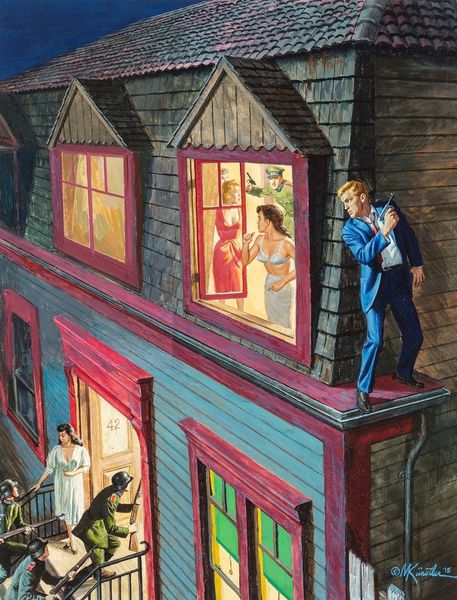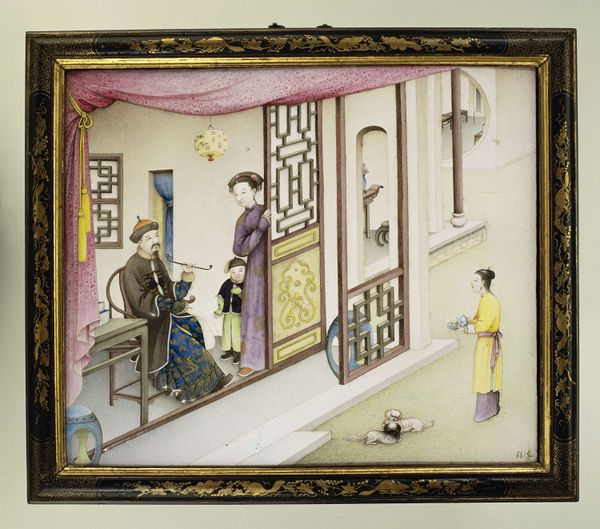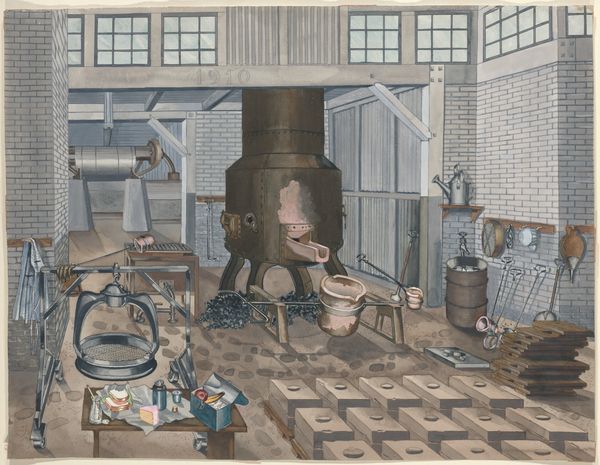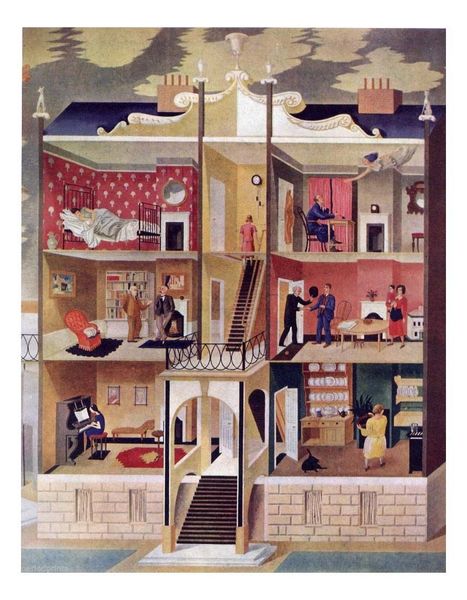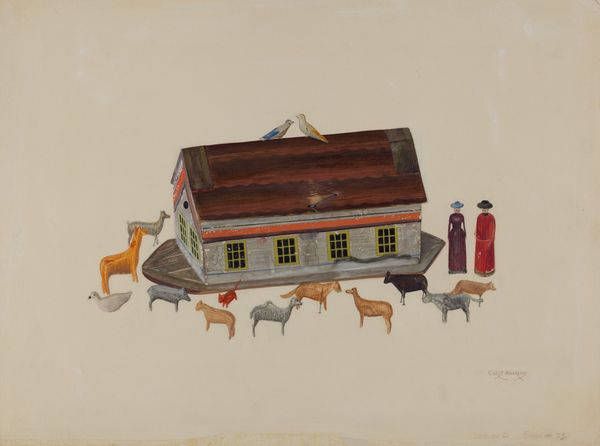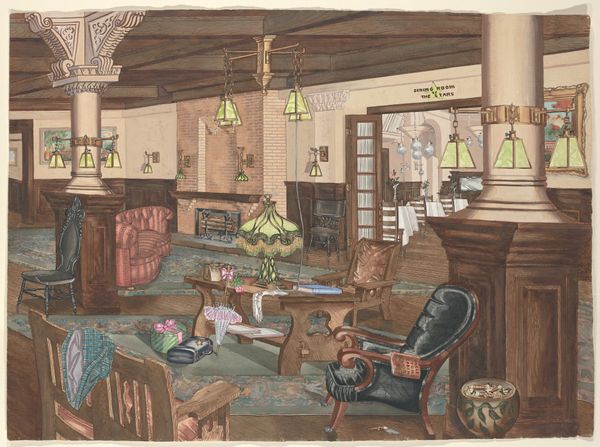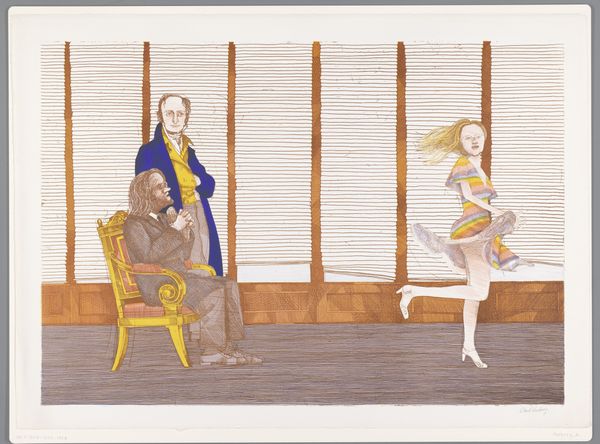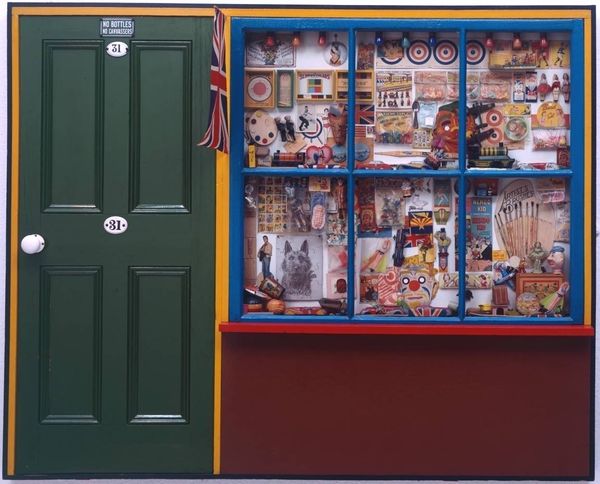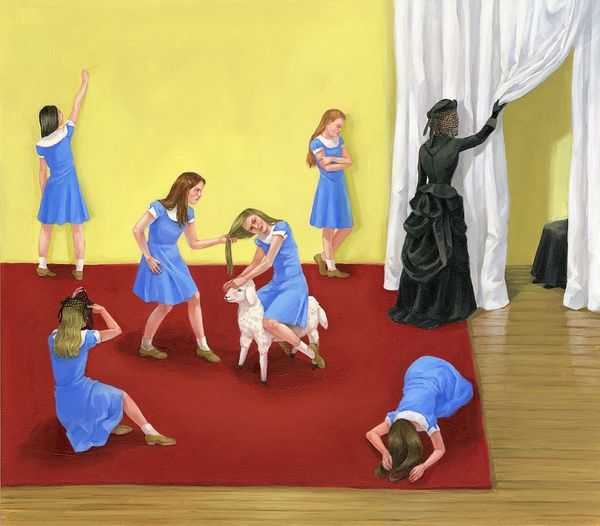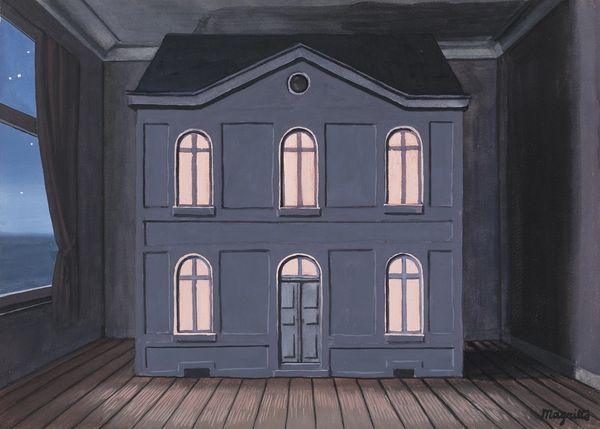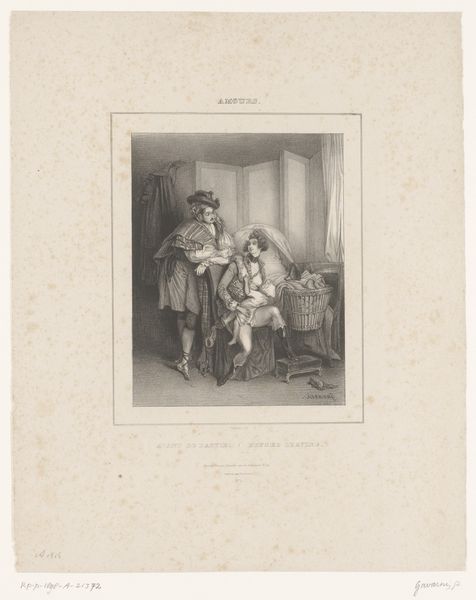
painting, watercolor
#
portrait
#
narrative-art
#
painting
#
figuration
#
watercolor
#
watercolour illustration
#
genre-painting
#
academic-art
Copyright: Modern Artists: Artvee
Curator: This watercolour illustration, presumably named "Math Class," depicts a quirky educational scene. The room itself, presented as a cutaway model, immediately caught my eye with its construction. Editor: There’s a whimsical yet unnerving quality to it, almost dreamlike. The setting looks like a schoolhouse diorama. I immediately think about institutions. Who gets to decide how math is taught, and whose historical narratives are centered? Curator: Good question. The materials and their arrangement are what draw my attention. Watercolour allows for transparency, lightness…it is traditionally a medium associated with illustration and preliminary studies rather than grand historical painting. The way Punchatz employs it adds to that dreamlike atmosphere. Also, consider that the work’s date of creation and patron can heavily alter both medium and subject. Editor: Absolutely. Looking at the images of Pythagoras, Euclid, and Newton, idealized in that almost comical way, it speaks volumes about how we selectively frame mathematical history. Note how those three figures are all white men, obscuring the many non-Western and female contributions to math throughout history. This artistic decision normalizes a deeply entrenched power dynamic. Curator: Precisely! The classroom setting reinforces this sense of prescribed knowledge production. Note that while the classroom’s content appears anachronistic with the bewigged instructor and old style of computation on the chalkboard, the teacher’s attire suggests a link between knowledge and class status, revealing that educational access and materials are shaped by social dynamics. Editor: And then there’s the dunce cap. That form of public shaming is an outdated tool but hints at how educational spaces have historically used punitive measures against those perceived as "slow" or "disruptive." So, how are systems set up to support—or fail—students who learn differently? Curator: A vital point. Thinking about the layers here - the physical layering of watercolour, the layering of historical figures, and the layered narratives – it all prompts us to reconsider the systems of knowledge production themselves and the labor invested. Editor: Indeed. “Math Class” is more than just a simple classroom scene. It asks critical questions about power, historical representation, and whose narratives matter in education.
Comments
No comments
Be the first to comment and join the conversation on the ultimate creative platform.
